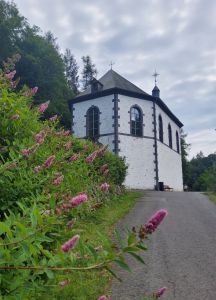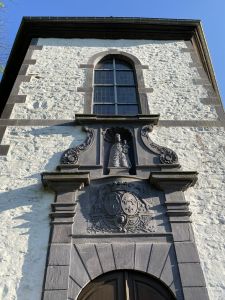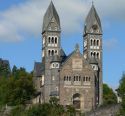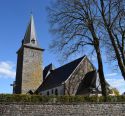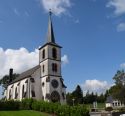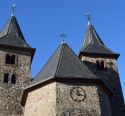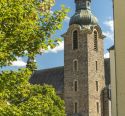Chapel | 1761 | Baroque | Catholic Church



Map
Opening hours
01 April - 30 September
Mon 8.00 - 20.00
Tue 8.00 - 20.00
Wed 8.00 - 20.00
Thu 8.00 - 20.00
Fri 8.00 - 20.00
Sat 8.00 - 20.00
Sun 8.00 - 20.00
01 October - 31 March
Mon 10.00 - 17.00
Tue 10.00 - 17.00
Wed 10.00 - 17.00
Thu 10.00 - 17.00
Fri 10.00 - 17.00
Sat 10.00 - 17.00
Sun 10.00 - 17.00
From the entrance, you can see the interior through a historic grille.
Guided tour
The Tourist Center Clervaux organizes a hike with a guided tour of the chapel every first Monday of the month at 2:30 PM.
You can contact them at +352 92 00 72 or info@touristcenter.lu
Description
The current chapel was constructed in 1761/62 by the Count of Clervaux, Adrien Jean-Baptiste de Lannoy, and his wife, Constance de Wignacourt. Along with the adjoining hermitage, the chapel was part of an extensive game park. This became a regional pilgrimage destination where Mary has been invoked for centuries as the "Health of the Sick."
The building is a masterpiece of Baroque architecture in the area. Its light-filled, oval interior features a harmonious design with rich furnishings.
Origin : Alex Langini, Die Loretokapelle, DCK 3/2013
Photos
Remarkable elements
portal
The Baroque portal, featuring the family coats of arms of the builders (J.-B. de Lannoy and C. de Wignacourt) and the Madonna with the Christ Child bearing the inscription “salus infirmorum” (Health of the Sick), is a work by the sculptor Stark, crafted from the “blue stone” of Recht (B).
Hermitage
Opposite the chapel lies the hermitage. The hermit's duty was to welcome pilgrims and care for the chapel, where services were held regularly, especially on Marian feast days.
Altar
The intricately carved high altar features a portrait of the Madonna of Loreto, painted on silk. Count Charles de Lannoy is said to have brought it from Italy in the 16th century.
Ceiling
The ceiling (barrel vault) features numerous lively Rocaille decorations. In the center, you can see the triangle with the “Eye of God,” which symbolizes the eternal presence of God.
Pulpit
The pulpit displays portraits of the Four Evangelists. The dorsal panel shows an image of the Good Shepherd, intended to be a role model for the preacher.



